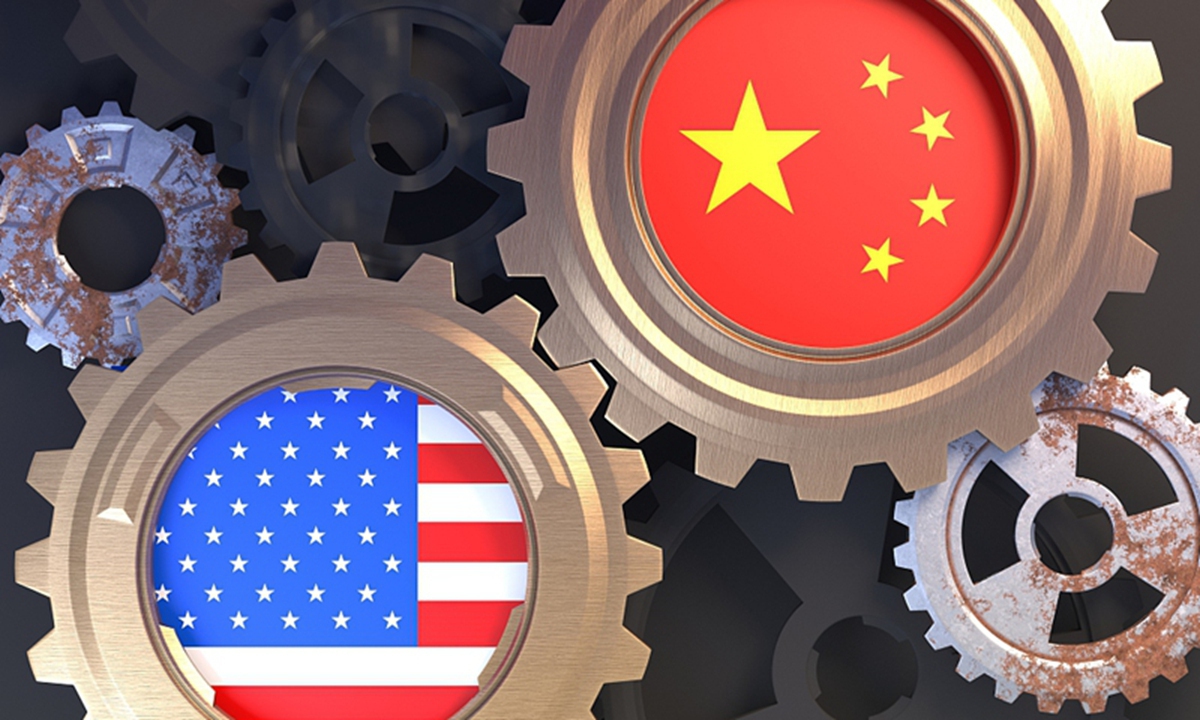
File photo: China US
China's Minister of Commerce Wang Wentao will visit the US and meet with US Commerce Secretary Gina Raimondo and US Trade Representative Katherine Tai next week, according to Reuters.Economic and trade relations play a ballast role in the US-China relationship. Since the normalization of US-China relations in 1978, bilateral relations have gone through storms, ups, and downs, but economic and trade relations have always been on the rise, tying the two sides of the Pacific Ocean together.
However, judging from the current trajectory of Sino-US relations, the weakening or "decoupling" of economics and trade will become a trend, not a U-turn, and a "slow downhill" path is certain. In doing so, the US uses various political, economic, and security issues to intensify the siege of China's manufacturing in the global market.
Since 2017, the importance of bilateral trade between China and the US for their respective foreign trade has declined to varying degrees. According to Chinese statistics, China's trade with the US declined from 14.21 percent of its total trade in 2017 to 12.04 percent in 2022. According to US statistics, US trade with China has declined from 16.34 percent of its total trade in 2017, to 13.08 percent in 2022.
This trend is dictated by the restructuring of the US and Chinese economies, especially by Washington's strategic alignment against China.
For a long time, US-China trade has given us the general impression that it is favorable and complementary to both sides and the benefits are mutual and balanced, therefore, it can be sustained in a lasting way. However, after the outbreak of the financial crisis in the global capitalist system in 2008, the US realized that the hollowing out and extreme financialization of its economy had directly shaken the foundations of its strength. At the same time, China, with its manufacturing development as the basic driver, began to rise rapidly.
The US realized that China's rise posed the most serious challenge to the power of its globally dominant capital. As the US began to find ways to bring back manufacturing, US-China trade became the idea where Washington used its "scalpel." The trade war initiated by the US since 2018 is different from some of the trade strikes the US has taken against China in the past, as it is a change in trend because it is accompanied by a strategic restructuring of the US domestic economy, meaning that the weight of trade and commerce as ballast between the two sides will gradually begin to diminish from this point on.
It is difficult to inch forward in the broader context of US-China relations, although there is still room for coordination.
The US perception of China's strategy has reached the point of serious irrationality. Washington has tied the renewed strength of the US to China's containment, and any bilateral relationship that benefits China is deemed to be detrimental to the US. The US is thus unwilling to concede to China, even if it suffers losses.
China has not reacted passively to this change. 2020 saw China begin a deep restructuring of its economy toward a double cycle. This policy should not be interpreted simply as reducing dependence on trade with the US but rather as repositioning the role of foreign trade in China's economic continuum, expanding domestic demand, while increasing China's trade with global markets. Such an adjustment is already showing momentum in the changing winds.
Of course, it's not like US-China trade can implode overnight. Never before has trade in goods between any two countries in the world reached the level of hundreds of billions of dollars (total trade in goods hit $690.6 billion in 2022 between China and the US), which is shaped by both trade and the deep intertwining of the two economies, including the daily lives of ordinary people. It is not difficult to find some areas in such a big picture where coordination can be enhanced to achieve stability. Still, we must see that the ballast role of the trade itself is limited.
The deep adjustment of the world's two largest economies will bring about structural changes in their respective economic strengths. It will determine the future trend of China-US trade and also global trade.
